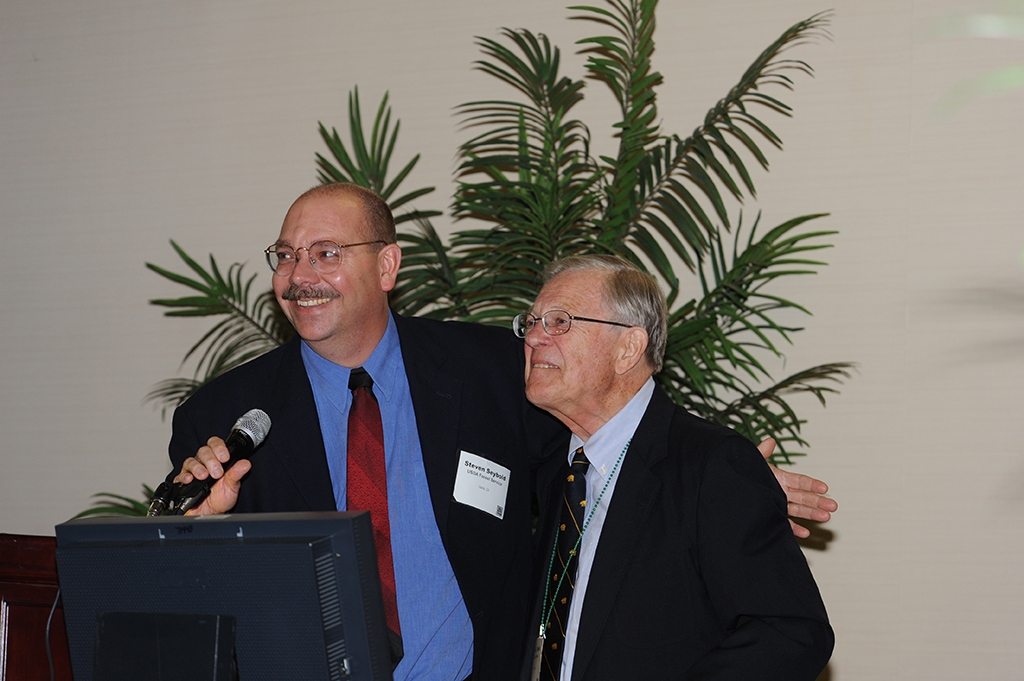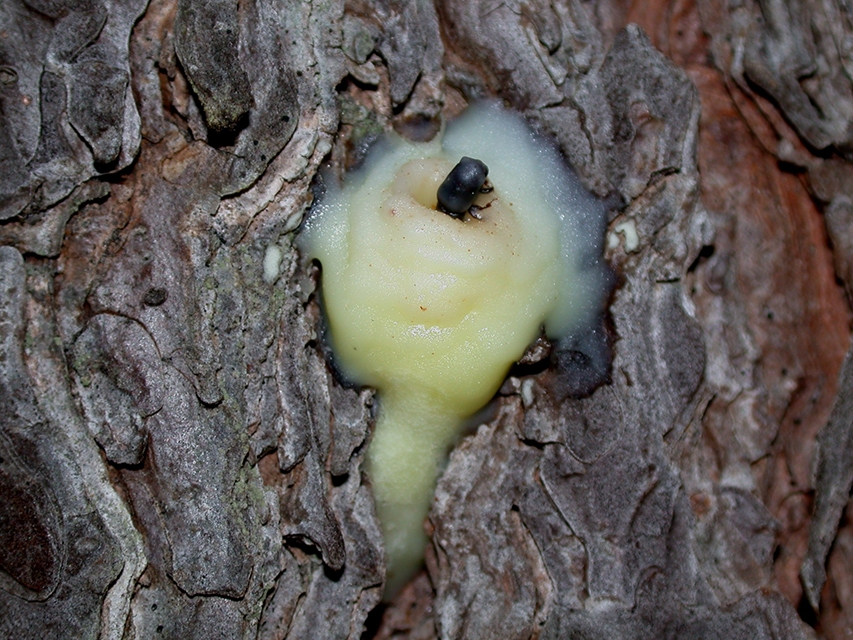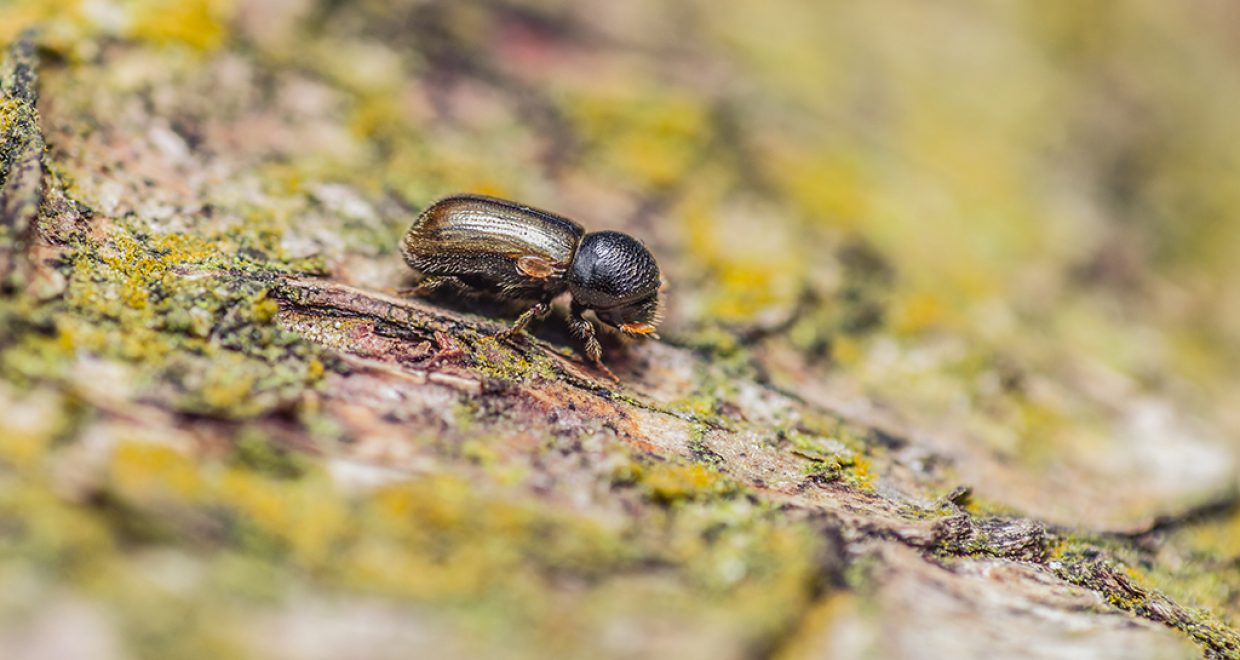Managing Bark and Ambrosia Beetles with Semiochemicals
Bark and ambrosia beetles are among the most important pests of forest and shade trees, and substantial basic and applied research has been devoted to the development of effective tools and tactics for their management.
A symposium focused on the application of behavioural chemicals for management of bark and ambrosia beetles was co-chaired by Drs. Steven J. Seybold and Christopher J. Fettig (United States Department of Agriculture, Forest Service, Pacific Southwest Research Station) in November 2018 at the Joint Annual Meeting of the Entomological Society of America, the Entomological Society of Canada, and the Entomological Society of British Columbia. Contributors included nine invited speakers from Canada, Slovakia, and the United States of America who summarised the current state of knowledge and latest technologies, and shared career-long experiences and insights. This special issue contains nine papers derived from contributions to the symposium (see below).

Sadly, Dr. Seybold passed away unexpectedly before this special issue was completed, and it now serves as a tribute to his legacy (see Fettig et al. 2021). Dr. Seybold’s research resulted in over 230 papers that collectively have been cited thousands of times. In short, he was a remarkable scientist, hardworking, and generous with his time and intellect. He will be missed by many.
- “Managing bark and ambrosia beetles (Coleoptera: Curculionidae: Scolytinae) with semiochemicals” by Seybold and Fettig (2021). This paper serves as the introduction to the special issue and establishes the need, importance, and relevance of this work.
- “Management of bark and ambrosia beetles (Coleoptera: Curculionidae: Scolytinae) with semiochemicals: letter to a prospective graduate student” by Borden (2021). This paper provides a creative narrative targeted towards a fictitious graduate student interested in semiochemical management of bark beetles.
- “Disruption of coniferophagous bark beetle (Coleoptera: Curculionidae: Scolytinae) mass attack using angiosperm nonhost volatiles: from concept to operational use” by Huber et al. (2021). This paper reviews the research concerning the use of nonhost signals to deter bark beetles.
- “Semiochemicals for management of the southern pine beetle (Coleoptera: Curculionidae: Scolytinae): successes, failures, and obstacles to progress” by Sullivan and Clarke (2021). This paper addresses complexities in the chemical ecology of southern pine beetle, the most destructive forest insect pest in the southern United States of America, and describes basic science gaps that hinder further progress in this field.
- “3-Methylcyclohex-2-en-1-one and the Douglas-fir beetle (Coleoptera: Curculionidae):history of successful bark beetle pheromone treatments” by Ross (2021). This paper reviews the isolation of 3-methylcyclohex-2-en-1-one (MCH) as the primary antiaggregation pheromone of the Douglas-fir beetle, and the development of highly effective tactics using MCH for tree protection.
- “Semiochemical-based integrated pest management of ambrosia beetles (Coleoptera: Curculionidae: Scolytinae) in British Columbia’s forest industry: implemented in 1982 and still running” by Borden and Stokkink (2021). This paper describes a consultant-run, semiochemical-based integrated pest management program for three species of ambrosia beetles in coastal British Columbia.
- “Semiochemical-mediated aggregation of the ambrosia beetle Trypodendron betulae (Coleoptera: Curculionidae: Scolytinae)” by Kühnholz et al. (2021). This paper describes several studies that resulted in isolation of the aggregation pheromone components of Trypodendron betulae.
- “Semiochemical-mediated host selection by Xylosandrus spp. ambrosia beetles (Coleoptera: Curculionidae) attacking horticultural tree crops: a review of basic and applied science” by Ranger et al. (2021). This paper focuses on three species of exotic ambrosia beetles in horticultural systems with the goal of describing their host-selection behaviours; characterising associated semiochemicals; and assessing how these interactions relate to potential management applications.
- “Semiochemicals for bark beetle (Coleoptera: Curculionidae) management in western North America: where do we go from here?” by Gillette and Fettig (2021). This paper provides an assessment of the state of knowledge and development of semiochemical methods for control of bark beetles in western North America, and is useful as a roadmap for future research and development in this field.

Development of effective semiochemical-based management tools and tactics for bark and ambrosia beetles is tricky business. It not only requires strong knowledge of chemistry, chemical ecology, insect ecology, and forest ecology, but of the major semiochemical components of the system being studied and eventually the most efficacious blends, ratios, and release rates to impart the desired behavioural effect on the insect in the field. It involves substantial time, risk, and investment in research, development, and application, which are often significant barriers to success for minor use crops, such as trees, where returns on investments can be limited. Despite this, significant advances are being made, ranging from increases in understanding of the biochemistry of pheromone production in beetles to commercialisation of novel products for field applications.
Special issue on managing bark and ambrosia beetles (Coleoptera: Curculionidae: Scolytinae) with semiochemicals: honouring the remarkable career of Dr. Steven J. Seybold, published in The Canadian Entomologist, is free to access until March 31.






